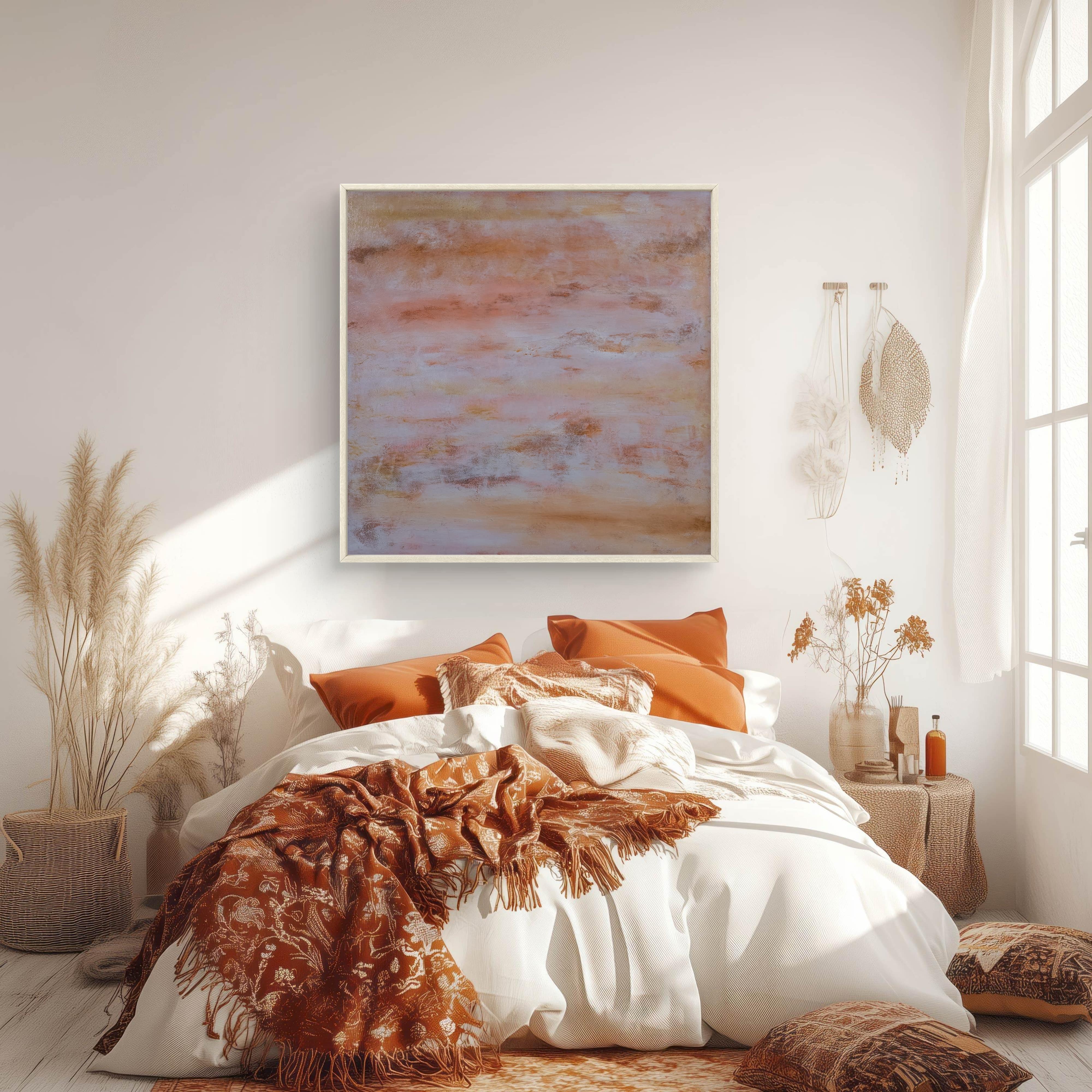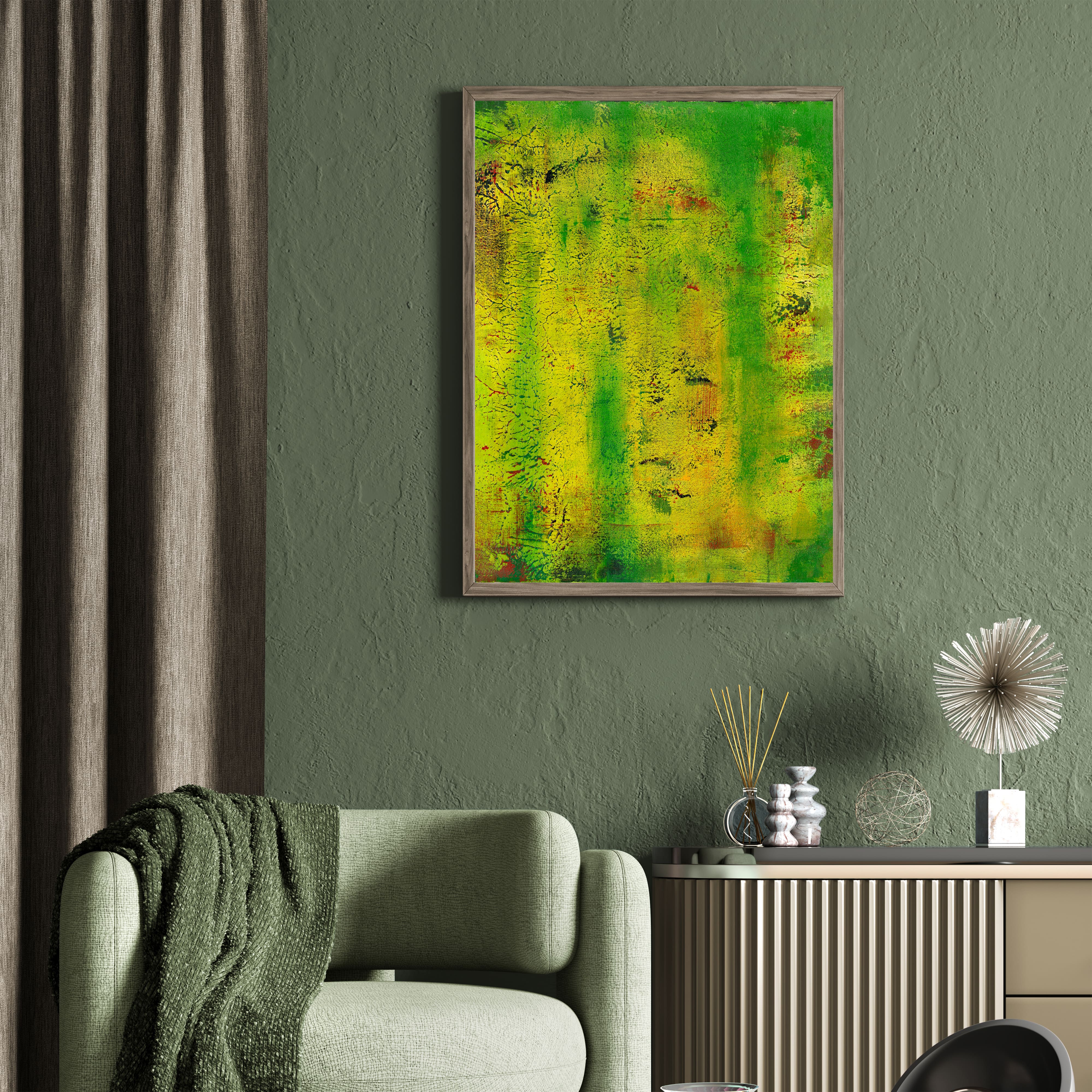How to Choose the Right Size Painting for Your Space (Without Guessing)
Choosing artwork size doesn’t have to be guesswork. Use this simple, practical guide to get proportions right the first time.

Step 1: Think About the Wall, Not Just the Painting
Aim for the artwork (or a group of artworks) to cover about two-thirds to three-quarters of the wall or furniture width it sits above.
- Above a sofa/bed: 70–80% of the furniture width usually looks balanced.
- Standalone walls: Larger pieces work best; small works can feel lost.

Step 2: Use Masking Tape to Test the Size
Mark the painting’s dimensions directly on your wall with masking tape. Step back, view it in daylight and evening light, and live with it for a day. It’s the fastest way to see if the size feels right—no guesswork.
Step 3: Consider Room Size and Ceiling Height
- Smaller rooms: Medium works (roughly 60–100 cm) add presence without crowding.
- Open/large spaces: Oversized pieces (100 cm+) anchor and define zones.
- Tall ceilings: Vertical pieces draw the eye up and balance the room height.
Step 4: Decide on One Statement or a Series
A single large painting makes a clear focal point. A series or diptych/triptych adds rhythm and can span wider walls. Keep spacing consistent (about 5–10 cm between frames) so the group reads as one visual unit.
Step 5: Match the Artwork to the Role You Want It to Play
- Centerpiece: Go larger so it naturally draws attention.
- Supportive mood: Choose medium or small to complement furniture and textures.
Quick Size Reference Guide
| Size | Typical Use |
|---|---|
| Small (36–60 cm) | Entryways, studies, hallways, or part of a gallery wall |
| Medium (60–100 cm) | Above consoles/sofas, dining rooms, versatile all-rounder |
| Large (100 cm+) | Living rooms, offices, feature walls; anchors big spaces |
Explore: Available Originals · Open Edition Prints · Ask for Sizing Help



FAQs
How do I know if it’s too small? If the piece looks “floaty” with lots of empty wall around it, it’s likely undersized. Try the next size up or add a companion piece.
Can I combine smaller works instead of one big piece? Yes—treat them as one unit. Keep consistent spacing (5–10 cm) and align the centers along a shared line.
Should the frame size influence my choice? Yes. Frames add width/height. If you’re custom-framing, allow a few extra centimeters overall.



Leave a comment
This site is protected by hCaptcha and the hCaptcha Privacy Policy and Terms of Service apply.